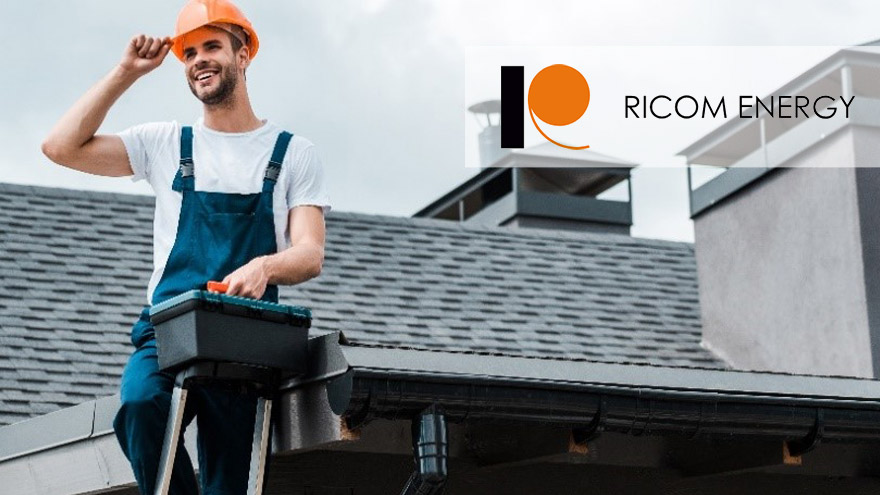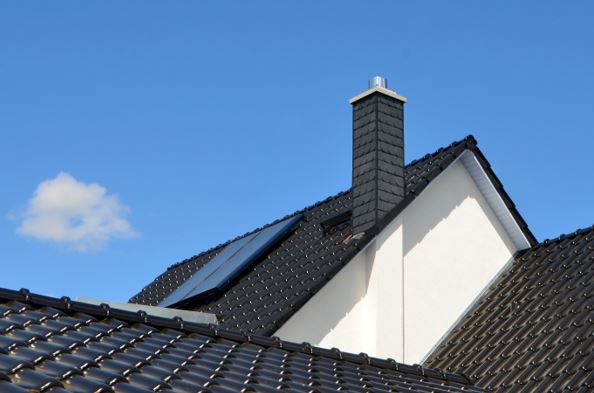When building a house , you must provide it with an efficient and reliable chimney system . It will determine the long-term thermal comfort as well as the level of safety of all household members. However, a poorly selected solution may result in unnecessary dirt, excessive fuel consumption and, above all, the risk of tragedy. So be sure to check out our guide to chimney systems!

From this article you will learn:
- what are chimney systems,
- what chimney systems do we distinguish,
- what accessories are needed to create system chimneys,
- which chimney system will be most suitable for your home,
- what trends are present on the market of modern chimney systems.
What are chimney systems?
A chimney is a long air duct that is used to carry exhaust gases or stale air. It usually takes the form of a vertical building structure. The investor decides on the type of chimney after consultation with the designer - this should be done at the very beginning of the work. Today, you can find many types of chimney systems on the market, which differ in both the materials used and the method of exhaust gas discharge.
Check out Ricom Energy products at the Onninen wholesaler
What types of chimney systems do we distinguish?
Chimney systems can be classified into many different categories. The main division includes free-standing and built-in chimneys . The former are usually made of prefabricated shapes (e.g. concrete or steel). The latter, however, used to be made of ceramic bricks (solid or chamotte), and now they are made of stainless steel.
Chimneys can also be divided according to the structure of the casing. You will encounter systems:
- single-layer - with a uniform duct wall, which include brick chimneys made of thick-walled steel and cement-limestone.
- multi-layer - with a wall consisting of several layers; which include, for example, concrete chimneys with thermal insulation and internal lining resistant to exhaust gases. It is also worth mentioning in this case modern coaxial systems in which the internal duct discharges exhaust gases and the external one supplies the air necessary for combustion.
Chimney systems are, of course, also classified in terms of location. Internal chimneys are located in the central part of the building and may be unrelated to it or connected to the load-bearing wall. External chimneys , on the other hand, run outside the building and can be structurally connected to it or built completely independently.
The division of chimney systems according to their function includes:
- smoke chimneys - intended for solid fuel boilers,
- exhaust chimneys - discharging exhaust gases from boilers using liquid and gaseous fuels; available in dry and wet variants,
- ventilation chimneys - used to exchange air in the ventilation system.
The classification of chimneys can also be based on the type of draft. We can then distinguish natural draft systems - which operate under negative pressure - and artificial draft systems (with a draft or exhaust fan). The last division is based on the nature of the chimney's operation:
- Chimney in wet mode - the exhaust gas temperature is between 40 and 160 degrees Celsius (e.g. for gas or condensing boilers).
- Chimney in dry mode - exhaust gas temperature exceeds 160 degrees Celsius (e.g. for coal-fired boilers).
- Chimney operating at positive pressure - the pressure inside the chimney is higher than atmospheric pressure.
- Chimney operating under negative pressure - the pressure inside the chimney is lower than the outside pressure.
What elements do chimney systems consist of?
 Chimney systems are simple structures consisting of two main elements, i.e. the housing and the insert.
Chimney systems are simple structures consisting of two main elements, i.e. the housing and the insert.
To make a system chimney casing , expanded clay concrete or ceramic blocks are most often used. The inserts are installed from chamotte or stoneware pipes, 66 or 133 cm long and 12 - 30 cm in diameter. The cables are characterized by a round cross-section and a glazed internal surface. Thanks to the use of appropriate materials, the pipes are resistant to high temperatures and to the effects of acids contained in exhaust gases.
The pipes forming the chimney liner are overlapped and sealed with a 7 mm thick layer of acid-resistant putty. The complete system also includes additional elements, such as:
- cleanout pipe and inspection door, allowing for inspection and maintenance of the chimney liner,
- connection pipe enabling connection of the chimney with a stove or fireplace,
- thermal insulating material that protects the cable from cooling down (e.g. mineral wool mat),
- ventilation grille for ventilation of the duct,
- condensate drain and ceramic fitting for condensate drainage,
- chimney cap, mounted on the top,
- a cone crowning the chimney liner.
Check out the chimney systems from Ricom Energy!
Which chimney system should you choose for your home?
When choosing a chimney for your home, you should consult the designer and contractor and take into account several most important factors. First of all, you must remember that the chimney system is matched to the type of boiler, not the other way around. So remember the criteria described above. For example, coal stoves will require smoke chimneys operating in dry mode, and gas stoves will require combustion systems operating in wet mode. The design should also include ventilation chimneys that will ensure proper air circulation in the building.
When planning the construction of a chimney system, it is worth taking an interest in modern solutions that, on the one hand, will significantly facilitate installation work and, on the other hand, will allow you to generate significant savings . Therefore, choose chimneys made of light materials that can be easily transported, even to hard-to-reach places. Their uncomplicated installation method will significantly reduce the time needed to complete the work. Moreover, these products are characterized by increased resistance to solvents, moisture absorption, corrosion and condensation. They are also non-toxic and have a low thermal conductivity coefficient, which reduces the risk of possible failures.
Modern chimney systems - an overview of current trends
The benefits described above are characteristic of chimney solutions provided to the market by the RICOM ENERGY brand. The trends that characterize modern systems include their compatibility with all types of condensing boilers . Thanks to the PAL, INOX and DW models, it is possible to completely omit the brick chimney, which translates into space and financial savings of up to PLN 3,000 - PLN 5,000. zloty. The SING, FLEX and PP systems use existing shafts in an innovative way , which only require renovation and adaptation to modern standards.
Modern solutions of the RICOM ENERGY brand are intended for both residential buildings and larger commercial and industrial investments. It is worth carefully reviewing the company's product range to choose a safe and efficient chimney system for your facility.
Do you have questions about the industry? Join the Świat Instalacji group!